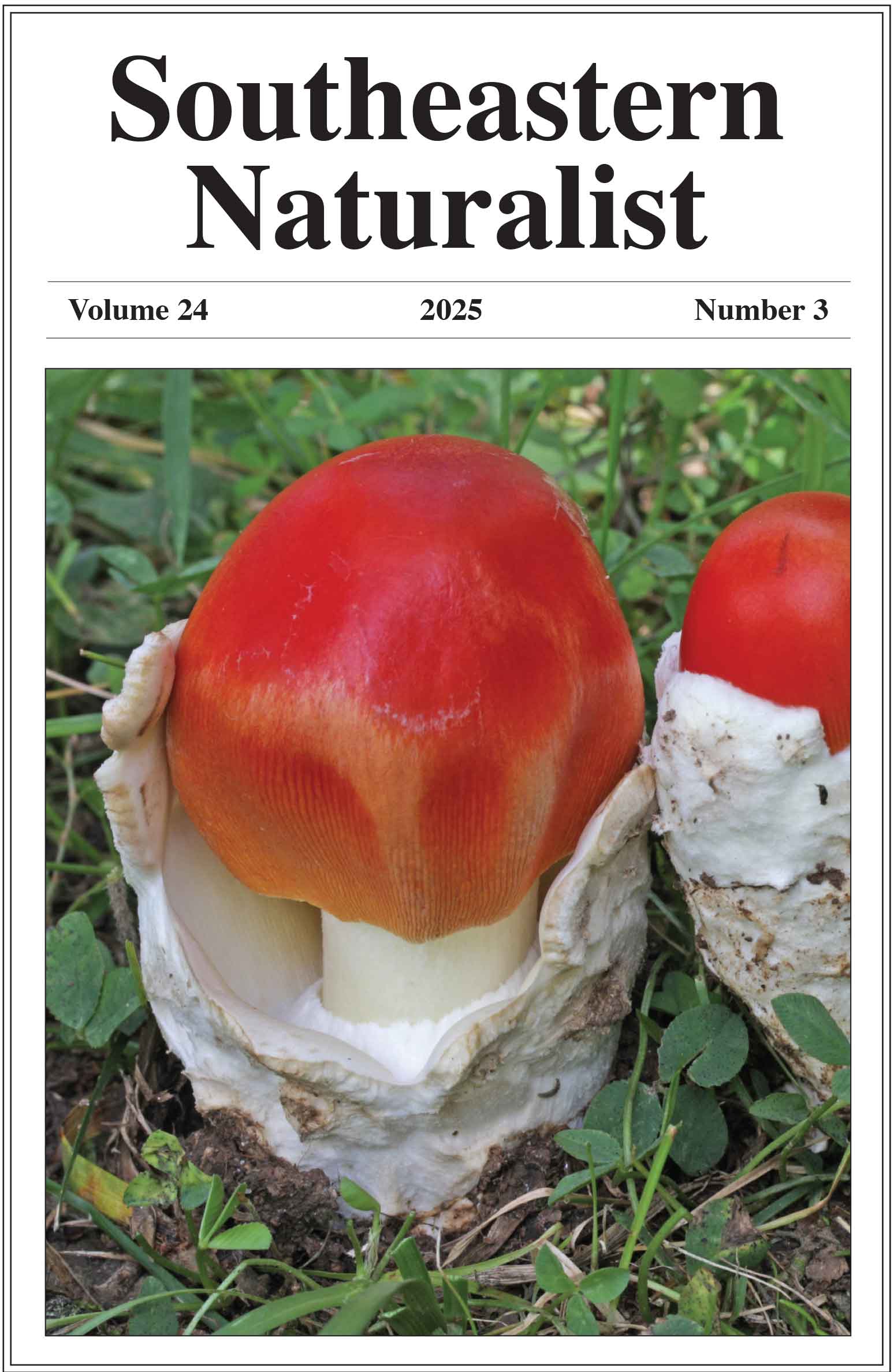Genetic Monitoring of Wild and Captive Populations of Barrens Topminnow (Fundulus julisia)
Carla Hurt1,*, Bernard Kuhajda2, Lydia Burton1,3, and Bennett Agee1
1Department of Biology, Tennessee Technological University, Cookeville TN 38505. 2Tennessee Aquarium Conservation Institute, Chattanooga, TN 37405. 3The Department of Applied Environmental Science, California State University, Monterey Bay, CA 93955. *Corresponding author.
Southeastern Naturalist, Volume 24, Special Issue 13 (2025): 1–16
First published early online: 12 June 2025
Abstract
Over the past 30 years, captive propagation and reintroduction efforts have been undertaken to mitigate the decline of the federally endangered Fundulus julisia (Barrens Topminnow [BTM]) throughout the Barrens Plateau region of Middle Tennessee. However, concerns remain about the loss of genetic diversity and adaptive potential in captivity, especially as reintroductions of captive-reared fish have had mixed success. This study analyzed genome-wide SNP genotypes in captive and wild BTM populations to assess patterns of genetic variation in captive populations relative to their wild counterparts. Estimates of heterozygosity and pairwise population distances indicated significant genetic drift and reduced genetic diversity when compared with source populations. Notably, a newly discovered natural population of BTM in the upper Collins River was found to be genetically distinct, warranting its classification as a separate evolutionarily significant unit. These findings can provide insights into the management of the BTM captive-breeding program and underscore the need for protection of the upper Collins River population.
![]() Download Full-text pdf (Accessible only to subscribers. To subscribe click here.)
Download Full-text pdf (Accessible only to subscribers. To subscribe click here.)
Access Journal Content
Open access browsing of table of contents and abstract pages. Full text pdfs available for download for subscribers.
Issue-in-Progress: Vol. 24( 4) ... early view
Check out SENA's latest Monograph and current Special Issue in progress:













 The Southeastern Naturalist is a peer-reviewed journal that covers all aspects of natural history within the southeastern United States. We welcome research articles, summary review papers, and observational notes.
The Southeastern Naturalist is a peer-reviewed journal that covers all aspects of natural history within the southeastern United States. We welcome research articles, summary review papers, and observational notes.